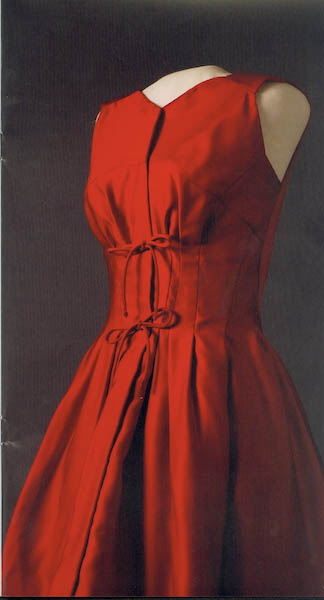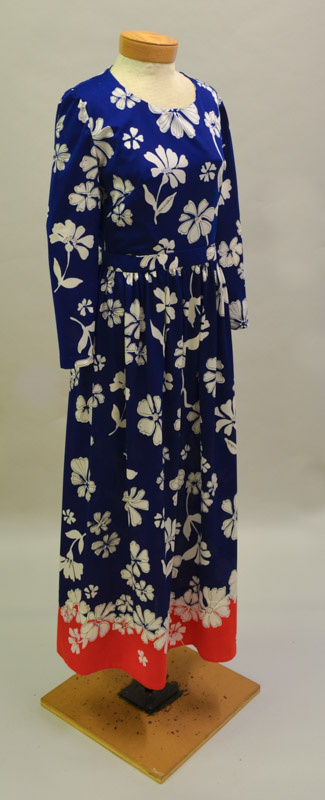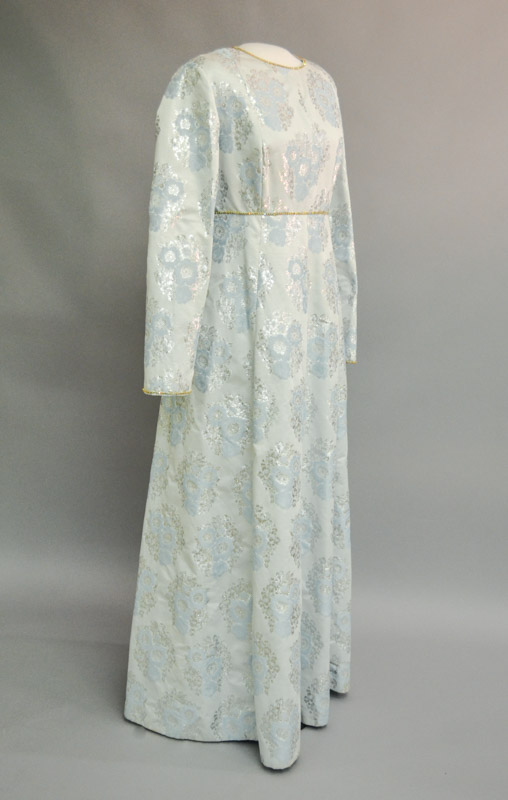What happens when you develop a new type of fabric which consumers then purchase and must figure out how to use it? That’s what happened when DuPont introduced Qiana nylon to the public in 1968 as a replacement for high cost silk.
In the late 1960s and early 1970s, sewing clothes in the home was very popular so Qiana was sold in bolts of fabric ready for women to make dresses out of it. For example, materials for a wedding dress could be purchased and made at home for around $60 in 1972 – a considerable savings from purchasing one already made.

(Museum Acc. #86.4.11)
But the problem with Qiana was that it was difficult to sew. So, in 1971 DuPont hired Charles Kleibacker, one of America’s top dress designers to travel around the country and hold sewing clinics to teach women experienced in sewing how to make couture dresses with Qiana fabric. In 1971 and 1972, he traveled to thirty cities throughout the country to give his free “traveling couture sewing clinic” at department stores.
Charles Kleibacker (1921-2010) designed his first line of clothing in New York City in 1960. Known as the “master of the bias cut”, his couture gowns started at $450 and went up. Some of his well-known clients included First Lady Pat Nixon, Actress Diahann Carroll and Mary Travers of the singing group Peter, Paul and Mary. For these clients, his gowns cost more than $1,500 and took hours to make. We are fortunate to have an exquisite example of his work in the collection. This design is timeless and could be worn today. (see above).

With Qiana fabric having a colorful Oscar de la Renta design, Mrs. Robert Fay made the above dress in the 1970s. This is an excellent example of how Qiana held colorful dyes which lasted over time.

Finally, I’d like to include a category of synthetic clothing that Hagley has which is unique. This is clothing made from prototype DuPont fabric that was acquired by close relatives related to DuPont administrative personnel which was used primarily for promotional purposes.
In 1968, Marilyn Fourney acquired this material from Roger Milliken of Milliken & Co. Her husband Robert Forney (1947-2017) was a DuPont chemical engineer and he also served as a Senior Vice-President for the company. Mrs. Forney used this material to make this dress which she wore to the inaugural ball for President Richard Nixon in 1969.
To see more DuPont Company related collections, go to https://museumcollection.hagley.org/explore-the-collection
Debra Hughes is the Hagley Museum Curator of Collections and Exhibits.
